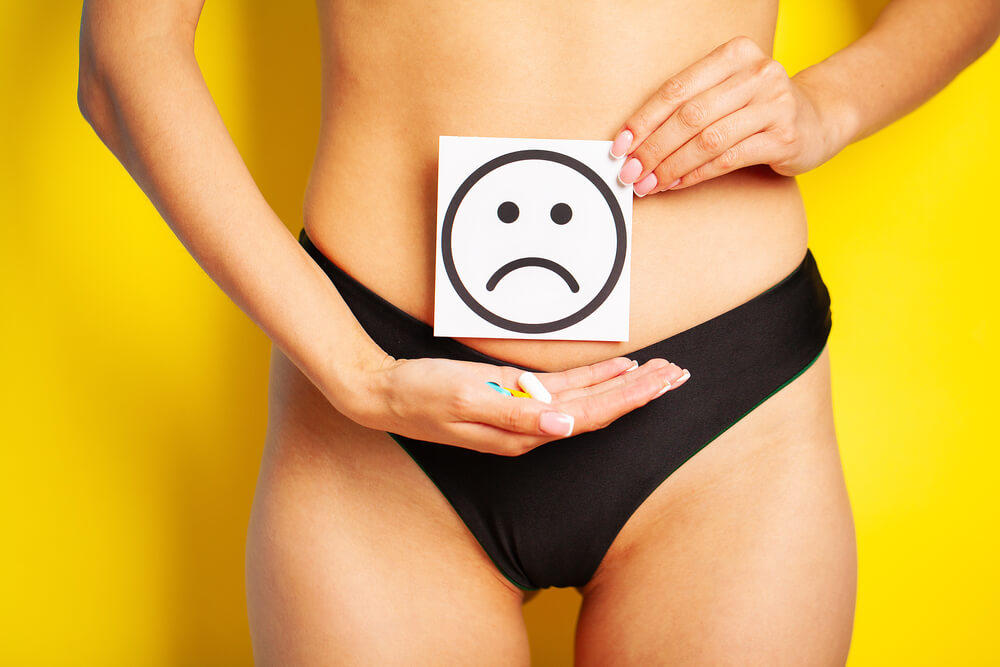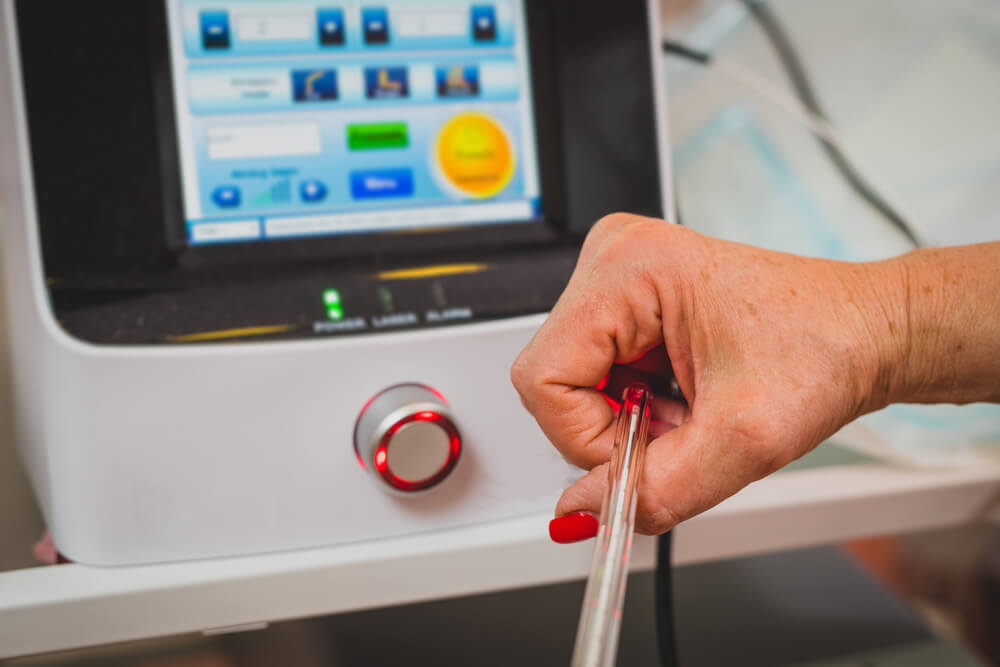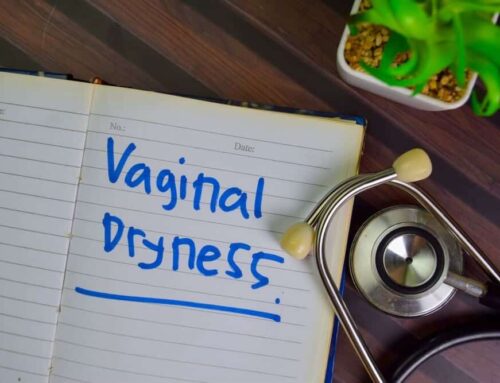
Vaginal dryness can greatly impact a woman’s intimate relationships and gynecological health. Fortunately, vaginal dryness is not a severe condition and can be treated through a non-surgical method. Living with itchy and sore vaginal discomfort can be a thing of the past, with laser treatment for vaginal dryness .
It comes as no surprise that laser treatment is a safe and effective way to treat vaginal dryness today, as laser treatments have been a common solution for various purposes. Over the years, lasers have been used for many cosmetic and healing procedures including the face, skin, eyes, and hair.
First, it is important to understand what vaginal dryness is and just how laser treatment can help.
What Causes Vaginal Dryness?
After menopause women may experience vaginal dryness due to a decrease in estrogen levels. Other common causes of decreased estrogen include chemotherapy, a hysterectomy, anxiety, and smoking. Women who have low estrogen levels are at an increased risk for vaginal dryness.
The reason a regular estrogen level is essential to a woman’s gynecological health is that it helps maintain natural lubricant by the ovaries, and a lack of it can cause thinning of the vaginal walls. With vaginal dryness comes other issues, such as the potential for tearing within the vaginal walls and discomfort during intercourse. Prolonged vaginal dryness poses other risks, such as itching, painful urination, and the potential for vaginal infections.

Vaginal dryness doesn’t have to be ignored and women can take charge by first learning the medical definitions behind it, which can be categorized in the following three ways:
Atrophic Vaginitis – Atrophic Vaginitis occurs when there is a lack of nourishment and hydration of a woman’s cells of the vaginal mucosa. Thinning of the vaginal and vulvar mucosa will create a sensitive and more vulnerable environment, risking trauma to the vaginal area. Women with atrophic vaginitis confuse the irritation and burning as a consequence of menopause or post-childbirth symptoms, which is why it is often ignored.
Dyspareunia – Women who experience painful sexual intercourse, can potentially be suffering from vaginal walls are thin, lost elasticity, and are unlubricated. Childbirth has been known to cause dyspareunia, because of lacerations caused by delivery. Women often feel uneasy about intimacy and experience a lack the desire for sex from dyspareunia.
Urinary Incontinence - As women age, they can come across challenges with urinary incontinence. The various levels of urinary incontinence are due to traumatic stress that comes with strenuous workouts or coughing, lack of urinary control, or issues with internal pressure from a full bladder that is unable to keep up with a small urethra. This is a common issue among women that causes vaginal dryness.
Regardless of the reason behind vaginal dryness, many women mistake these as normal symptoms that are caused by life events or age. A woman’s vaginal discomfort must not be neglected and there are solutions available to treat it. Vaginal laser treatment is an alternative treatment that is worth understanding.
To determine if you are a good candidate, be sure to get a proper diagnosis of your condition by a gynecologist and ask what vaginal laser therapy is and if it might be a suitable option for you.
Why Laser Treatment for Vaginal Dryness?
The use of topical creams and estrogen replacement is commonly used to treat vaginal dryness. However one solution isn’t always suitable for all women, so for those looking for an alternative treatment, vaginal laser treatment offers a noninvasive choice. Unlike topical creams and estrogen replacement, vaginal laser treatment is used to restore vaginal tissue and encourage the body to heal itself.
Mona Lisa Touch® laser is a fractional CO2 laser that stimulates microscopic tissue disruption. Vaginal laser therapy assists in the growth of new blood vessels and promotes cellular changes in collagen, restoring the mucous membrane.
How Does Vaginal Laser Therapy Work?
The laser used for vaginal therapy works by creating micro-lesions through a special scanner. These micro-lesions begin the neocollagenesis process to create collagen and the result is the development of vaginal mucosa. Vaginal laser therapy achieves this by naturally triggering the tissue regeneration process, so the body can work to heal and improve as early as the first treatment.
This procedure will reestablish the proper function while improving urinary dysfunction. During the healing process, the mucosa tissue becomes nourished and hydrated, encouraging vaginal pH to develop the natural protective barrier. The results of tissue regeneration are a more toned and elastic vaginal wall, reducing the risks of infection that are prevalent during vaginal dryness.
With vaginal laser therapy, women who suffer vaginal dryness have the opportunity to enjoy their intimate relationships and take back their gynecological health again.
Who is a Good Candidate for Vaginal Laser Treatment?
Laser treatment is safe for women who do not opt for hormone treatment and women who are not good candidates for hormone therapy for vaginal dryness, including breast cancer patients. All women who experience low estrogen levels, recurring vaginal infections, soreness during urination, and dryness after childbirth, can be good candidates. The ideal candidates are women who prefer a non-invasive, non-surgical, and natural option to treat vaginal dryness.
This laser treatment signals the tissues to generate more collagen and promote vaginal mucosa. A gynecologist may be consulted, to ask if they recommend vaginal laser therapy.
What to Expect with Vaginal Laser Treatment?
There are important factors to consider when choosing vaginal laser treatment. During a vaginal laser procedure, women can expect three to four laser treatments, with six weeks in between each treatment. Many women have found the procedure to be relatively painless, so while anesthesia may not be required, a topical numbing cream may be used.

The Mona Lisa Touch® laser treatment is a five-minute procedure, using an FDA-Approved laser probe on the inner walls and outside of the vagina. Women can expect a gentle vibration on the vagina during this short procedure.
After Vaginal Laser Treatment
To maintain the best results it is recommended that patients have one vaginal treatment scheduled every year, after the first few initial sessions. Many women return to normal daily activities after completing each treatment but are advised to refrain from intercourse for up to three days. Symptoms can vary from woman to woman, but the risks of vaginal laser therapy are minimal.
Women who experience redness and swelling can use an ice pack to encourage the healing process. Many women see results immediately after one session, but three sessions are recommended because significant results are seen after subsequent sessions. A gynecologist can help monitor a patient’s progress and advise how frequently they need to return.
What Has Been Said About Vaginal Laser Treatment
Many women have responded positively to the experience of vaginal laser therapy. Some have described laser therapy as a painless pap test. The most compelling statements, however, come from women who have restored their quality of life again.
Unsuccessful treatments of the past have left women feeling hopeless and stuck with their limited options. The ability for women to take charge of their intimacy and feel a sense of renewal again has been the most beneficial testimony from Mona Lisa Touch® vaginal laser therapy.



